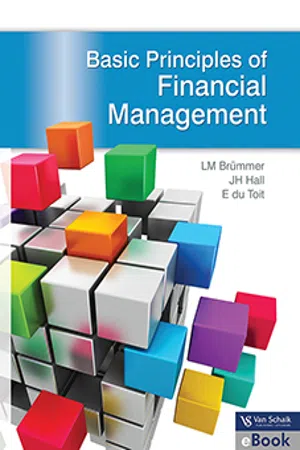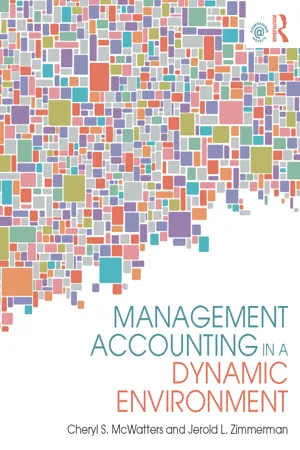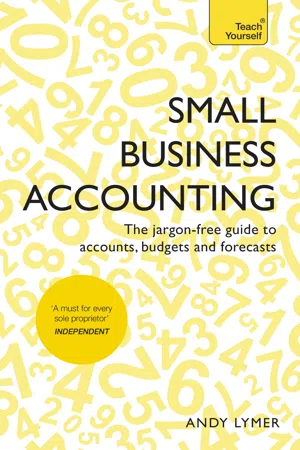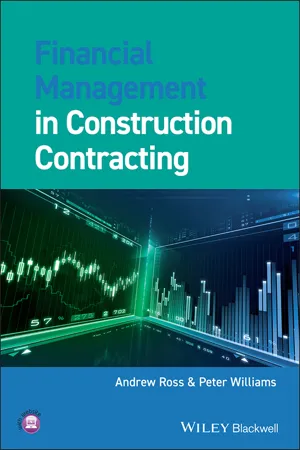Cash Budgeting
Cash budgeting is the process of estimating a company's cash inflows and outflows over a specific period, typically a month or a year. It helps businesses plan and manage their cash resources effectively by predicting when cash shortages or surpluses may occur. By analyzing cash flow patterns, companies can make informed decisions about investments, expenses, and financing.
8 Key excerpts on "Cash Budgeting"
- eBook - ePub
- Jae K. Shim, Joel G. Siegel, Allison I. Shim(Authors)
- 2011(Publication Date)
- Wiley(Publisher)
...The last schedule prepared before the financial statements is the cash budget. The cash budget is a schedule of estimated cash collections and payments. The various operating budgets and the capital budget are inputs to the Cash Budgeting process. The cash budget is prepared for the purpose of cash planning and control. It presents the amount and timing of the expected cash inflow and outflow for a designated time period. Because it is a tool for cash planning and control, it should be detailed so that managers know how much is needed to run their business. If cash flows can be estimated reliably, cash balances can be retained near a target level with fewer transactions. The cash budget should be prepared for the shortest time period for which reliable financial information can be obtained. In the case of many small businesses, this may be one week. However, predicting major cash receipts and cash payments for a specific day is also possible. The cash budget helps management keep cash balances in a reasonable relationship to needs. It aids in avoiding having unnecessary idle cash, as well as averting possible cash shortages. If there is idle cash, excess funds can be invested in short-term securities, such as U.S. Treasury bills and commercial paper, to earn a return; if the budget reveals a cash shortage, money can be borrowed, expenditures cut, or assets sold. The cash budget ensures that users will have sufficient cash funds available to the business at all times. The cash budget also allows for review of future cash receipts and cash payments to uncover possible patterns of cash flows. In this way, collection and disbursement efforts can be studied to ascertain if net cash flows are being maximized. In addition, the cash budget reveals when and how much to borrow and when users will be able to pay the money back...
- eBook - ePub
- Brümmer LM, Hall JH, Du Toit E(Authors)
- 2017(Publication Date)
- Van Schaik Publishers(Publisher)
...In practice, a one-year cash budget could be prepared every month, updating the closing balances and utilising the information from the activities of the recent past. Companies handling large amounts of cash may even prepare cash budgets at daily intervals. The cash budget indicates to the financial manager the extent, timing and sources of the cash inflows the extent, timing and sources of the cash outflows the cash surpluses and cash shortages, their timing as well as the period of time during which they will occur. When compiling the cash budget, the following must be taken into consideration: A clear distinction between cash and credit sales. The credit policy that will be followed with the collection of credit sales as well as discounts allowed to encourage timeous payments and to curb bad debts. The policy regarding the payment of trade payables. The cash outflows as required by the operating and long-term budgets. Specific provisions for the payment of interest, tax and dividends by the organisation. As mentioned before, the key input to the cash budget (and the whole budgetary process) is the sales budget. The task of forecasting income normally lies with the 134 marketing department. Several techniques are used for income and sales forecasting, but these fall outside the scope of this book. Table 8.1 gives an example of a format for a cash budget. Table 8.1 An example of a format for a cash budget HOTSHOTS (PTY) LTD CASH FLOW PROJECTION FOR THE THREE MONTHS ENDED 28 FEBRUARY 20X6 DECEMBER JANUARY FEBRUARY TOTAL CASH RECEIPTS Cash sales 50 000 20 000 50 000 120 000 Collections from debtors 100 000 200 000 100 000 400 000 Loans received – – – – Interest received 1 000 1 000 1 000 3 000 Other income – – – – 151 000 221 000 151 000 523 000 CASH DISBURSEMENTS Cash purchases 20 000 10 000 – 30 000 Payment of creditors 40 000 60 000 40 000 140 000 Operating expenses 120 000 120 000 120 000 360...
- Stephan Leimberg, Robert J. Doyle, Michael S. Jackson, Martin J Satinsky(Authors)
- 2019(Publication Date)
- The National Underwriter Company(Publisher)
...BUDGETING AND CASH MANAGEMENT CHAPTER 14 INTRODUCTION Budgeting can be defined as the ability to estimate the amount of money to be received and spent for various purposes within a given time frame. For purposes of this text, however, one should think of budgeting as a deliberate plan for spending and investing the resources available to the investor. It ultimately serves as a yardstick against which to measure actual investment results. HOW DOES IT WORK? In simplest terms, the budgeting process works as a result of the establishment of a working budget model by an investor, followed by the comparative analysis of actual investment results with the expected results used to create the planning budget...
- eBook - ePub
- Cheryl S. McWatters, Jerold L. Zimmerman(Authors)
- 2015(Publication Date)
- Routledge(Publisher)
...(Appendix) Monthly cash-flow analysis is extremely important to determine if a cash shortage might arise in a given month. If a cash shortage is expected, the organization can plan to arrange some financing to allow the organization to pay its bills and continue to operate. Financial forecasting tools and spreadsheets offer a means of determining the sensitivity of cash flows to the budget estimates. KEY TERMS Budgeting : Process of gathering information to assist in making forecasts. Budget lapsing : Budgets for one period cannot be used to make expenditures in subsequent periods. Budgets : Forecasts of future revenues and expenditures, which translate organizational goals into financial terms. Favorable variance : The amount by which budgeted costs are greater than actual costs, or budgeted revenues are less than actual revenues. Flexible budgets : Budgets that adjust to some measure of volume. Incremental budgets : Use of last year’s budget as a base to make future budgets. Line-item budgets : Budgets that authorize the manager to spend only up to the specified amount on each line item...
- eBook - ePub
Small Business Accounting
The jargon-free guide to accounts, budgets and forecasts
- Andy Lymer(Author)
- 2015(Publication Date)
- Teach Yourself(Publisher)
...25 Budgeting and cash-flow forecasting In this chapter you will learn: • How to budget for the future • How to plan your expenditure • How to keep your finances in check Thus far the accounting system in this book has been backward-looking, recording how well the business has performed in the past. Good financial control of a business should also be a forward-looking process, planning in advance how much cash or overdraft facility will be needed to cover future business needs. Preparing a budget of future costs and forecasting business cash-flow is a helpful discipline to get into, although many small businesses don’t do it. The method set out here aims to minimize the amount of work involved while still giving you a useful prediction to help you manage the financial aspects of your business. An ideal way to prepare budgets and cash-flow forecasts is to use a computer program known as a spreadsheet. Microsoft Excel™ is one of the market leading programs, but there are many others that are similar in operation (e.g. perhaps try Open Office spreadsheet – it is freely available online). Spreadsheet programs are useful in this whole area because they allow assumptions to be changed easily in order to reveal the effects of the changes on business finances. Chapter 27 outlines computerization issues. Budgeting The budgeting process is an essential part of costing, which is dealt with in the next chapter. A large part of the budgeting process reflects the sorts of calculations that you may be familiar with from your own personal finances, calculating monthly outgoings and anticipating the timing of bills. These same skills apply to budgeting for a business. At the outset, however, an important distinction between what are called ‘fixed’ and ‘variable’ costs must be understood. In the situation of Grace Morris’s shop, some costs are quite fixed in amount, and can be accurately predicted in advance...
- eBook - ePub
Executive Finance and Strategy
How to Understand and Use Financial Information to Set Strategic Goals
- Ralph Tiffin(Author)
- 2014(Publication Date)
- Kogan Page(Publisher)
...This chapter deals with budgeting sales, costs and thus profit (or loss!) – the budgeted P&L account anticipated for the future, or what is termed the ‘operating budget’. The word can mean many things to the business person and many to the accountant. At its most basic, or primitive, budgeting is the exercise of living within your means. There is a certain, probably fixed, amount of income, and costs should not exceed this. The concept of prudent budgeting and living was summed up succinctly by Mr Micawber in Dickens’ David Copperfield : ‘Annual income twenty pounds, annual expenditure nineteen pounds nineteen and six, result happiness. Annual income twenty pounds, annual expenditure twenty pounds ought and six, result misery.’ Cash Budgeting is the simplest form of budgeting but it demonstrates the principle of the need to forecast when amounts of events are likely to happen, in this case cash flows in and out. Operating budgets are an accrued version, that is, they record when the event of a sale or a cost is forecast or expected to occur. The distinction between ‘forecast’ and ‘budget’ is explored below. Forecasting methods The difference between ‘forecast’ and ‘budget’ A question I have often been asked is ‘What is the difference between forecast and budget?’, either the noun or the verb...
- eBook - ePub
- Andrew Ross, Peter Williams(Authors)
- 2012(Publication Date)
- Wiley-Blackwell(Publisher)
...11 Financial management 11.1 Budgetary control 11.2 Definitions 11.2.1 Cost 11.2.2 Value 11.3 Cash flow 11.3.1 Movement of funds 11.3.2 Cash flow forecasting 11.3.3 Client and contractor 11.3.4 Cash flow forecast limitations 11.3.5 Simple forecasting models 11.3.6 Credit terms 11.3.7 Minimum and maximum cash requirements 11.3.8 Capital lock up 11.3.9 Expediting receipts 11.3.10 Delaying payment to suppliers 11.3.11 Project cash flow 11.3.12 Organisational cash flow 11.4 Working capital 11.4.1 Current assets 11.4.2 Current liabilities 11.4.3 Profitability ratio References 11.1 Budgetary control Budgeting and its use in systems of monitoring and control influence a great deal of organisational life. The discussion of organisational cybernetics is beyond the scope of this text; However, anyone who has worked within organisations which use budgets will recognise the adage ‘what gets measured gets attention’. A lot of analogies are used to consider control, the most common mechanistic one being a thermostat (Figure 11.1): a standard established through norms, a system of measurement of actual against predicted, a means of communication of this to some mechanism that can take corrective action and, finally, an action taken which is likely to have an effect upon the factors that caused the variation from the standard. Figure 11.1 Control, measurement and remedial action. This analogy is helpful in understanding a simple control system and can it easily be extended to consider budgetary control within construction organisations, but it has many shortcomings as it does not reflect the complexity and interconnectivity of organisational systems, human behaviour, the role of measurement and feedback. Construction firms have to budget and manage their budgets in dynamic economic environments; the measures they use have to be adapted to a wide range of clients, resource suppliers and project procurement approaches...
- eBook - ePub
Return on Investment Manual
Tools and Applications for Managing Financial Results
- Robert Rachlin(Author)
- 2019(Publication Date)
- Routledge(Publisher)
...Note that additional monies would be required in wages and operating expenses, working capital, and, in this case, perhaps additional machinery. In reality, some differences may occur in each of the account balances. They are presented here merely to illustrate what might occur and the effect of sales growth on the need for more monies. Some of these monies are not all cash, and therefore the term “monies” is used to reflect the use of both cash and related funds. Control A cash forecast will assist a company in setting up centralized control mechanisms that will enable the company to know the amounts of cash available in the cash system, how much additional cash will be needed in what time period, and when to expect both receipts and disbursements of cash. This is discussed later in the chapter. Payments A cash forecast will highlight anticipated payments of loans, including interest payments, bonuses, major creditors, and dividends. It will indicate when these payments are to be paid and whether sufficient funds are available. Having this knowledge on hand can provide a company with the tools for shifting funds on a temporary basis to meet the demands of current payments. By using this technique, temporary shortages of cash may be avoided. Investments A cash forecast will point out how much and in what period cash will be in excess, in other words, how much and when excess cash can be invested in short-term securities. These short-term securities will generally yield high short-term interest, which can be used to generate additional income. This becomes part of a company’s cash management program. Borrowings Irregularity in the flow of cash is inherent in any operating business and may require temporary borrowings. From time to time, shortages of cash will result, especially to support working capital requirements. Seasonality may create a cash shortage that is temporary...







